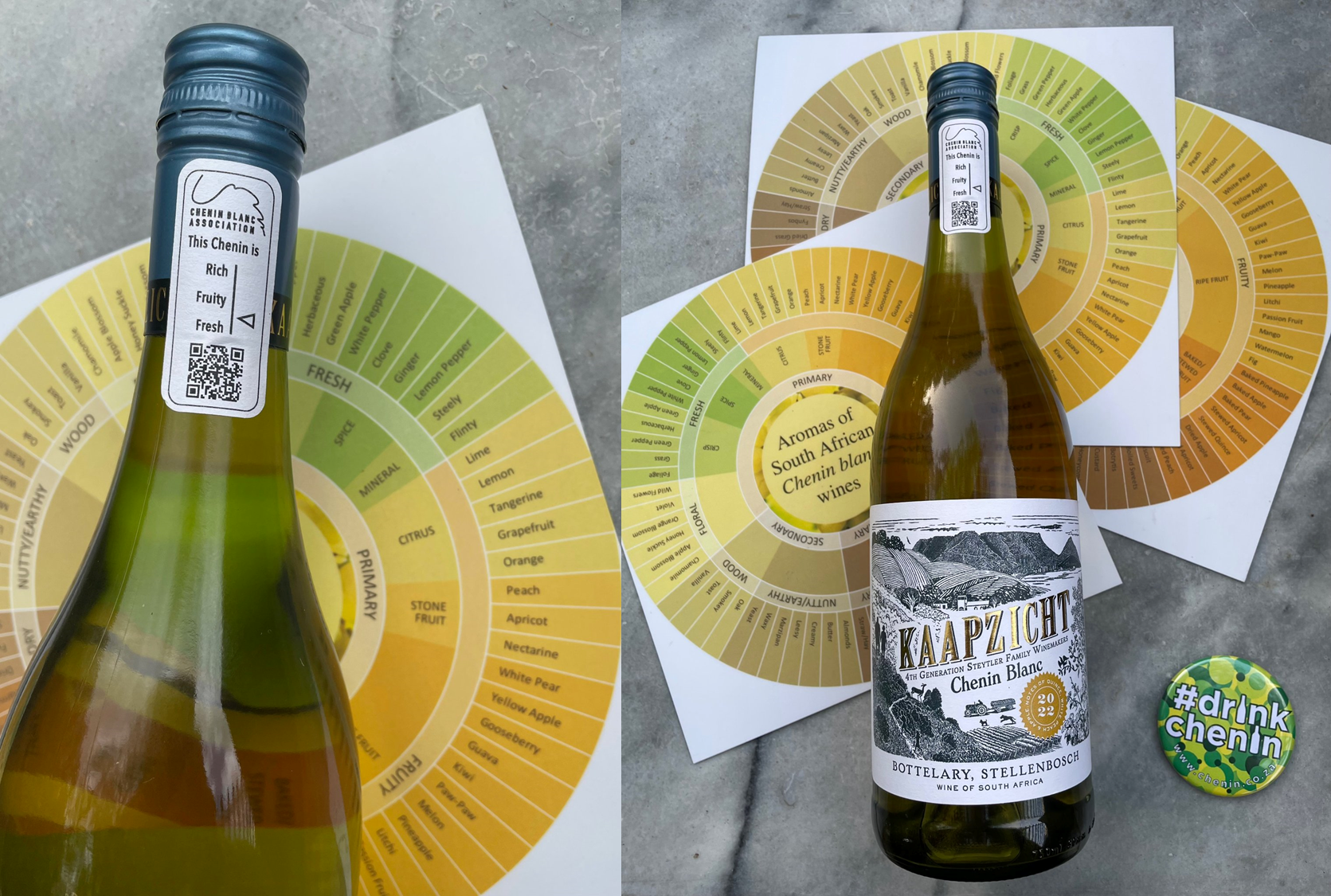While the Loire, and in particular the vignerons of Vouvray, are questioning whether they should follow the example of Alsace by indicating the residual sugar on the back label of their Chenin Blanc, South Africa is putting the arrow in the lead. And overtakes. The latest gimmick of the Chenin Blanc Association (Cba) is in fact the Chenin ‘style indicator‘ (‘Fresh’, ‘Fruity’ or ‘Rich’) that will appear on the bottles of the 2022 vintage.
Guiding consumers towards a more conscious choice, and above all closer to their own taste, will be a double icon. It will be affixed to bottles of Chenin Blanc, on the front and on the back. The “Show-and-tell taste icon” will leave no room for doubt: «What you see is what you buy», reads the initiative’s claim.
An arrow, positioned on the value scale from ‘Fresh’ to ‘Fruity’ to ‘Rich’, will explain the style of each Chenin Blanc on the shelf, even before you open the bottle and taste it.
The Chenin Blanc Association describes it, in no uncertain terms, as «a new trump card». «Part of the appeal of Chenin is its versatility», explains Ken Forrester, one of the main architects behind the creation of the Cba and the worldwide reputation of South African Chenin.
«You can get absolutely delicious Chenin Blancs in South Africa, from dry to finely sweet; from pure and fresh to layered and complex. The not so good news is that Chenin can sometimes confuse buyers. How can they know what taste characteristics to expect from the bottle they pick up off the shelf?».
THE ‘SHOW-AND-TELL TASTE ICON’ FOR CHOOSING CHENIN BLANC
«To simplify the selection – Ken Forrester continues – we created a linear scale icon. It starts with ‘Fresh’ at one end and ‘Rich’ at the other, with ‘Fruity’ placed right in the middle. An arrow indicates the position of the wine along the line, from a taste point of view. It does not reflect the chemical composition of the wine. It serves to predict, quickly and comprehensibly, what can be expected from a stylistic point of view».
The style indicator, developed in collaboration with the South African Wine & Grape Research Institute at Stellenbosch University, has been approved by the South African Wine Industry and Systems (Sawis), the body responsible for South African wine appellations of origin and their labelling.
The new icon has been trialled by several large and small artisanal producers. Some have gone even further, linking it to a QR code to offer consumers the possibility of obtaining additional information about the aromas and flavours of South African Chenin blanc.
«We hope that eventually all members of the Chenin Blanc Association will adopt it,’ comments Forrester, in an effort to make shopping even easier. Not all labels will have QR codes. But producers who choose this route will be able to lead consumers to more in-depth descriptors that align with the Chenin Blanc aroma wheel».
THE CHENIN BLANC AROMA WHEEL
The sensory descriptors on a linear scale, from ‘Fresh’ to ‘Fresh/Fruity’, ‘Fruity’, ‘Fruity/Rich’ and ‘Rich’, are taken from the ‘Wheel’ devised in 2007 by the CBA, together with the University of Stellenbosch and various industry players.
According to Forrester, wines that are on the ‘Fresh’ side of the scale are fresh and savoury. Those at or near the ‘Fruity’ point will show fruit and spice characters. Those at or near the ‘Rich’ end of the spectrum will likely show some traces of wood ageing and notes of cooked or dried fruit, with memories of butter and vanilla.
«Efforts to build the prestige profile of South Africa’s Chenin Blanc nationally are already paying off,” Ken Forrester points out, “with wines priced between R100 and R120 per bottle (€5.95 to €7.10, ed) expected to grow by 96% in volume between 2020 and 2021».
Meanwhile, Chenin retailed between R90 and R100 (€5.30 to €5.95) increased by 87%. Those in the range between R70 and R80 (€4.15 to €4.70) by 49% over the same period. «Overall – Forrester concludes – there has been good growth in value, but we are particularly pleased with the growing interest in wines priced above R70».
